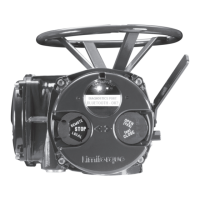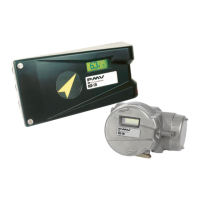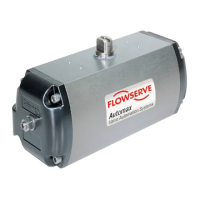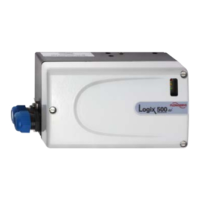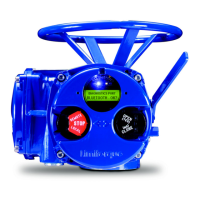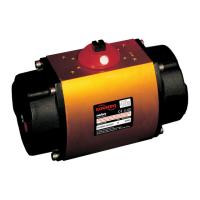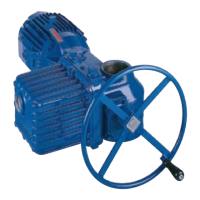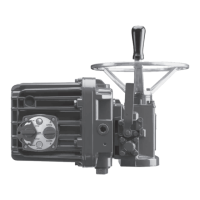ROTADISK Pneumatic Actuator RD & RDF
Operating Manual – BA3002 EN
3 Product Description
Page 31 of 79
also possible that the ROTADISK Pneumatic Actuator moves into the OPEN position by
means of the springs (spring opening or Fail Open) in the event of a compressed air drop.
The slewing angle of the ROTADISK Pneumatic Actuators can be adjusted by ±3° with the
standard end position setting
.
The ROTADISK Pneumatic Actuators of the RD & RDF types have standardised interfaces for
adding signal devices, positioners, solenoid valves and valves.
3.2 Variants
The ROTADISK Pneumatic Actuators of the RD & RDF types are available in different variants
which differ with regard to the size, spring package and sealing material.
3.3 Functional Description
The ROTADISK Pneumatic Actuators of the RD & RDF types operate according to the double
wing functional principle. The generated force is converted by two pistons (twin piston
principle) and a lever, the double swing arm, into useful torque at the drive shaft. The design
principle of the double swing arm achieves optimum transformation of the energy of the
compressed air into the useful torque. The user therefore benefits from a low air
consumption.
A high start and end torque results from the characteristic kinematic. The drive torque
characteristic therefore corresponds almost ideally with the torque behaviour of a ball valve
or a check valve. The compact design also allows later automation in confined spaces. The
anodised drive body and the PU-painted li das well as the rust and acid-resistant drive shaft
ensure reliable functioning even under the harsh conditions of the chemical industry.
The springs of the single-action pneumatic actuators are designed for more than 10
7
load
cycles and have optimal corrosion protection.
The end position setting is only possible in the open position of right-hand rotating pneumatic
actuators or the closed position of left-hand rotating pneumatic actuators. The end position setting
is not possible in the RD/RDF 2.5 models.
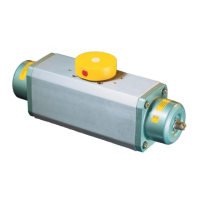
